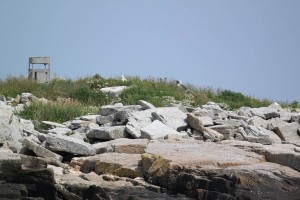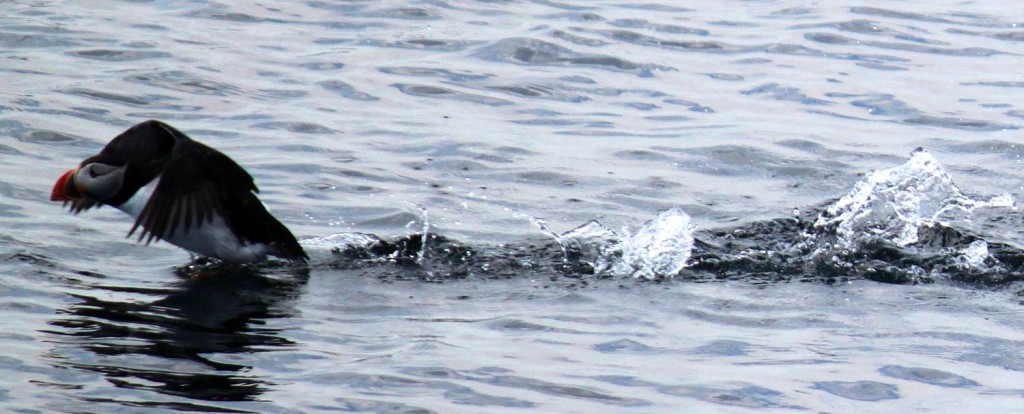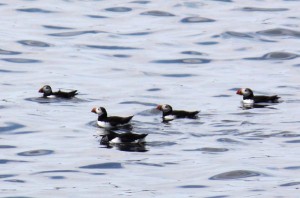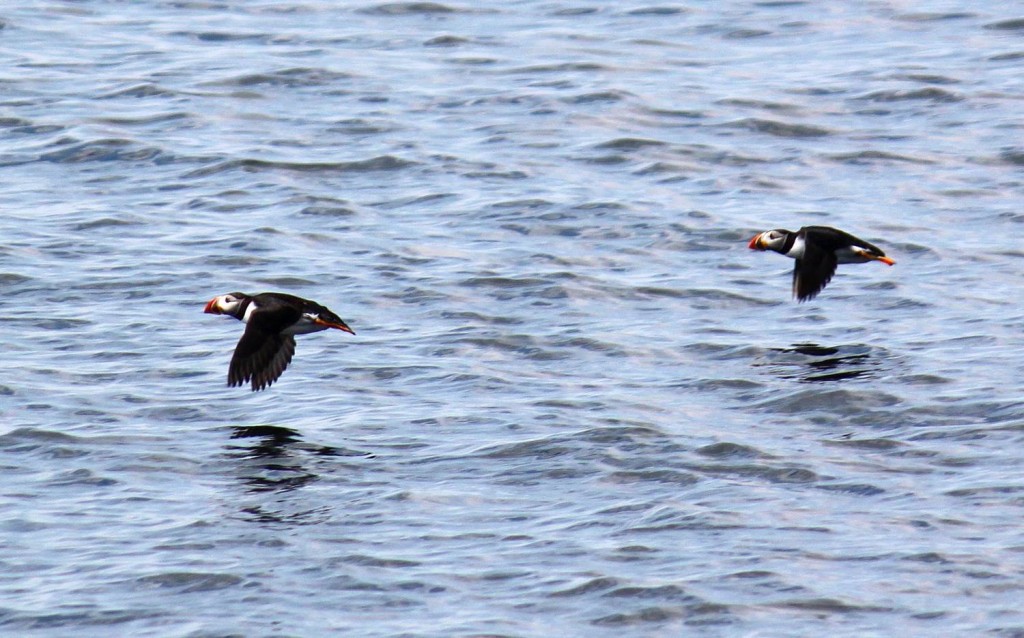I am a self-proclaimed homebody, and Maine is about the farthest I’ve traveled for a birding expedition. What can I say, I love New England. We took one of Cap’n Fish’s Puffin Cruises from Boothbay Harbor, Maine, to Eastern Egg Rock Island, the southern-most tip of the Atlantic puffin’s breeding range.
A few facts about puffins to start with. People think of them as the penguins of the northern hemisphere, but puffins are members of the auk family, and unlike penguins, puffins can fly. Puffins are abundant in the northern portion of their range (Iceland, for example), with an overall healthy population, earning them the designation of “species of least concern” on the IUCN Red List. However, the southern-most populations of Fratercula arctica are probably more vulnerable to climate change. Warmer water leads to a reduction in plankton, which, in turn, reduces the population of the small fish that puffins eat. The overall trend in recent years has been a puffin population decline, but some years are better than others.
And this year has been a good one for puffins off the coast of Maine. We got some great views of these photogenic birds. Not to over sell the cruise, though. You really don’t get very close to the island or to the birds. What you actually see with the naked eye is a black and white speck and a flash of orange if the light is just right and you use your imagination. My photos were extensively cropped.
If you read about the ecology of this charismatic member of the auk family, you might think it’s amazing that puffins use Eastern Egg Rock at all.
Not only is this tiny island at the extreme of the bird’s range, it’s also not very good breeding habitat. Puffins prefer to nest on grassy slopes above steep cliffs, so they can easily launch themselves into the air, essentially by jumping off a cliff. To the right is a shot of this rather flat, albeit rocky island.
I didn’t get to see how puffins launch themselves off of Eastern Egg Rock. Maybe they have to waddle down to the water? That could make them vulnerable to predation by large gulls, and at the very least it would waste precious energy. But like I said, I never got to see how they get from this relatively flat island into the water. I did see how they get into the air from the water: They run, flapping, across the surface of the water, building up speed and thrrrrrust! (Remember Mac, from Chicken Run?)
There’s an interesting duality to the puffin’s life cycle. During the breeding season, they are quite social and nest in colonies. And it’s not that they just appear social because they’re forced to compete for a few precious nesting sites clustered on islands. Parents hang out with other parents even when they leave the chicks to go fishing. It’s common to see them in small flocks on the water.
As the breeding season draws to a close, parents and young go their separate ways and disperse to the open sea. They are then solitary until spring, when hormones compel them to meet up with other puffins at the shore and reunite with last year’s mate. A mated pair is a pair for life.
Finally, it’s worth mentioning that puffins have two very important conservation roles. As top of the food chain piscivores, they bio-accumulate heavy metals, serving as indicators of toxic contaminants. But perhaps beauty trumps biology in this case. This appealing, penguin-like creature captures the imagination and induces people to support conservation efforts. And that’s just wonderful, because when land and resources are conserved for one charismatic species, many other species benefit under that umbrella. Indeed, Audubon uses puffin charm to great advantage with their Adopt-a-Puffin program.














